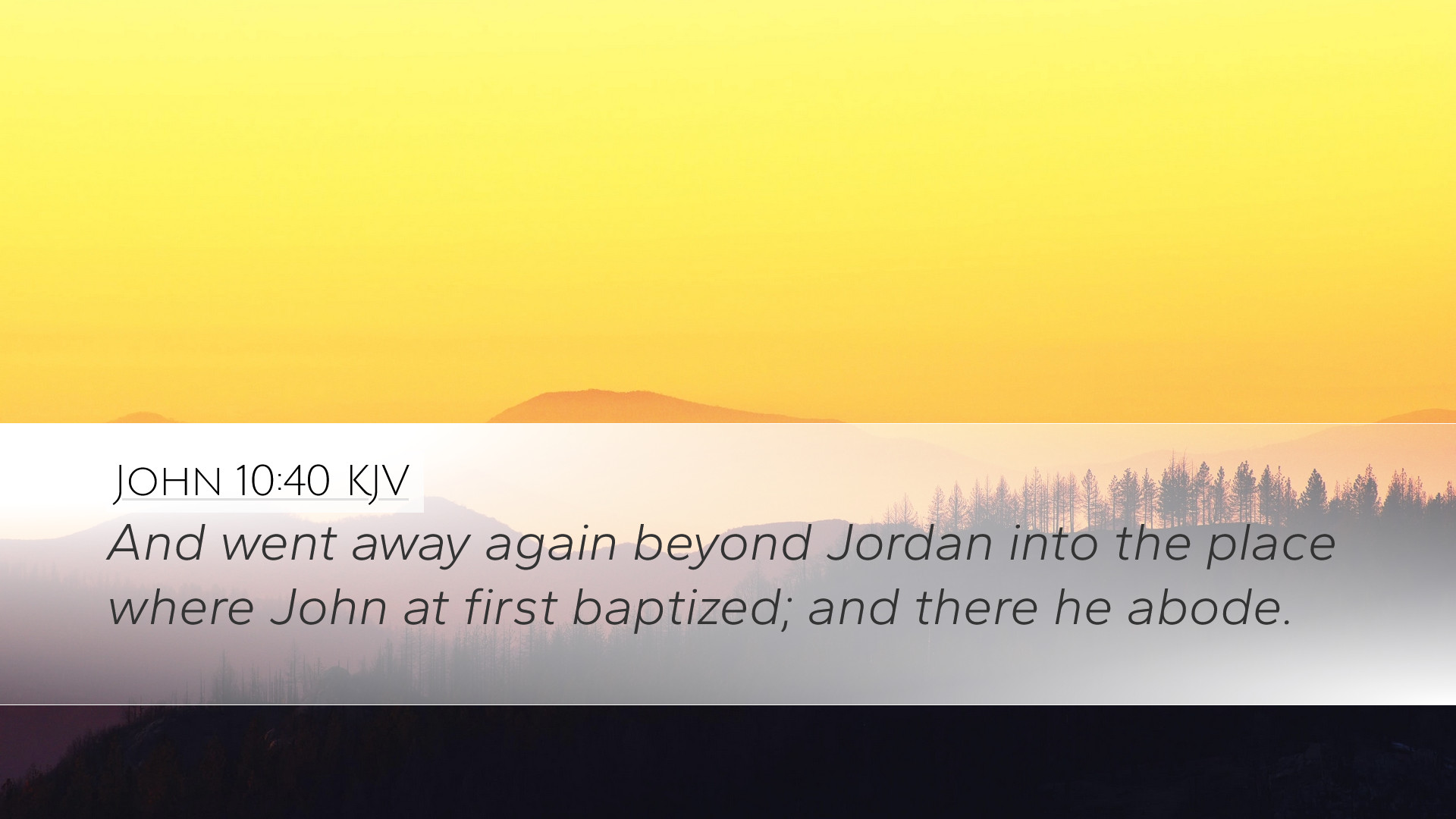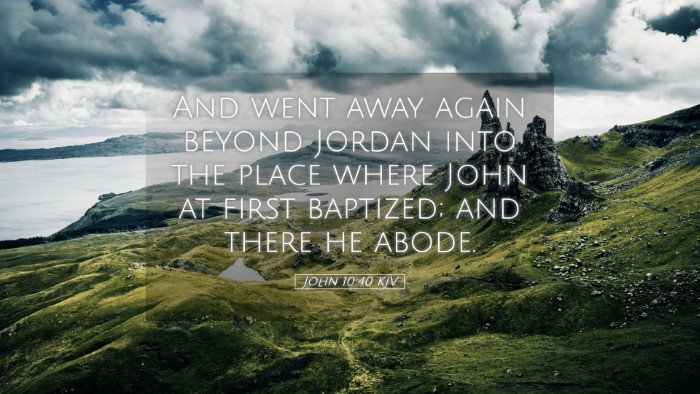Commentary on John 10:40
Verse: John 10:40 - "And went away again beyond Jordan into the place where John at first baptized; and there he abode."
Introduction
In examining John 10:40, we delve into the context of Jesus's ministry and the significance of His movements, particularly His return to the region beyond Jordan. This verse serves as a transitional moment in John's Gospel, encapsulating the responses of the people and highlighting the nature of Jesus’s mission.
Contextual Analysis
This passage occurs shortly after Jesus made profound statements about His identity as the Good Shepherd and the reactions of the Jews, who were divided in their opinions about Him. The setting beyond Jordan relates to the early ministry of John the Baptist and echoes themes of repentance and preparation for the Messiah.
Insights from Public Domain Commentaries
Matthew Henry's Commentary
Henry reflects on the significance of Jesus retreating to the site of John’s earlier baptisms. In his view, this was a return to a place where many had been prepared spiritually. The location symbolizes a return to foundational truths, emphasizing the importance of recognizing Jesus as the One whom John pointed to. Henry also notes the contrasting reactions of the people, some who accepted Jesus and others who rejected Him. This highlights the necessity for discernment in recognizing God’s truth.
Albert Barnes' Notes
Barnes offers an understanding of the geographical significance of this location. The area beyond Jordan was a place free from the immediate hostilities that Jesus faced in Jerusalem. This retreat not only reflects Jesus’ wisdom in navigating potential threats but also provides a context for genuine ministry. He notes that many came to Him in this region after hearing John's witness and observed a faithful continuation of Jesus’s mission. This movement is interpreted as an act of God’s providence, allowing Jesus to minister where hearts were prepared.
Adam Clarke's Commentary
Clarke emphasizes the idea that Jesus' retreat serves multiple purposes. He explores the strategic and spiritually significant aspects of His move, indicating that it was a way to evade hostility while providing a space for teaching and healing. Furthermore, Clarke discusses the historical significance of this area concerning John’s ministry, linking it to the larger narrative of redemption. He points out the deep-seated connection the audience had with John’s message, which prepared the way for their acceptance of Jesus. Here, Jesus embodies both the continuation and fulfillment of John’s prophetic ministry.
Theological Implications
The retreat signifies the intention of Jesus to draw those who truly seek Him, offering a space for reflection and belief. Theologically, we see a profound truth in the juxtaposition of acceptance and rejection. The verse leads us to ponder how individuals respond when God moves among them. It is an invitation for contemporary believers to consider where they might encounter Christ today—often in places where prior seeds of faith have been sown.
Practical Applications
- Seeking Spiritual Retreat: Like Jesus, believers today must recognize the value of retreat—stepping back from the chaos of life to seek God in quiet places.
- Preparing Hearts: The significance of John’s ministry challenges us to cultivate environments where individuals can encounter Christ meaningfully.
- Responses to Jesus: Reflecting on the varied responses to Jesus, leaders and students of Scripture are called to consider how they present the message of the Gospel—recognizing that acceptance may sometimes be met with rejection.
Conclusion
John 10:40 encapsulates profound themes of ministry, identity, and the human response to divine revelation. The insights drawn from historic commentaries enrich our understanding of the text. For pastors, students, and scholars alike, this verse invites deep reflection on the spaces we cultivate for faith and the vital role of recognizing Jesus amidst our spiritual journeys.


